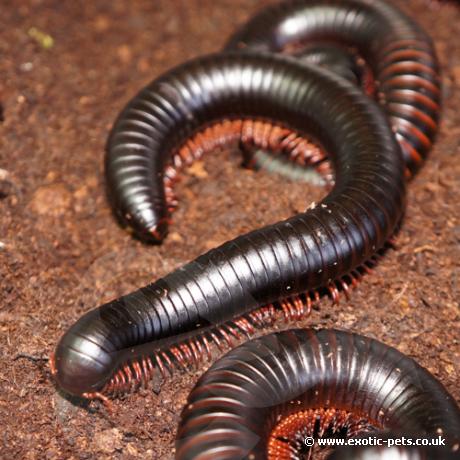

Their large size, tolerance and forgiveness to minor husbandry errors, makes this species perfect for novice keepers. Also known as Giant Train Millipedes.
| Origin | East and South Africa |
|---|---|
| Environment | Dry savannas |
| Adult Size | Up to 32cm |
| Suitability | Novice keeper |
| Food Type | Omnivorous |
A large species of millipede that tapers slightly towards the head (up to 32cm). Multicoloured body ranging from almost black to mahogany. The inner rings are lighter and contrasting in colour, often shades of orange and sometimes reddish. The legs and antennae are usually mahogany to rusty brown in colour.
Commonly found in areas of dry savanna in East Africa (Kenya, Tanzania) and South Africa, with distinct rainy and dry seasons.
House singularly or in groups, in large and secure plastic tanks or glass terrariums with dimensions of around 60 x 30 x 30cm. This species is tolerant of some temperature fluctuation, but try to maintain them between 24°C (75°F) and 26°C (79°F) using appropriate terrarium heating equipment. If using a heat mat, have this cover no more than half the tank, and mount outside on the back wall so as not to dry out the substrate. Mats must be controlled by a thermostat to avoid risk of overheating and causing a fire risk. Maintain a moderate level of humidity around 70-80% with frequent misting, using a hand or pump sprayer.
Provide a deep soil based substrate layer of 7-10cm which is enriched with natural organic matter. Add natural decor such as bark and branches for enrichment and cover. Sphagnum moss can also used for helping maintain humidity.
This species is omnivorous and will consume a wide range of fruits, vegetables and animal protein. Place food into a shallow dish and lightly dust in calcium powder. Replace food regularly (preferably daily) to prevent substrate contamination and the attraction of fruit flies. Leaf litter, dead wood and lichen at varying levels of decomposition will also be consumed.